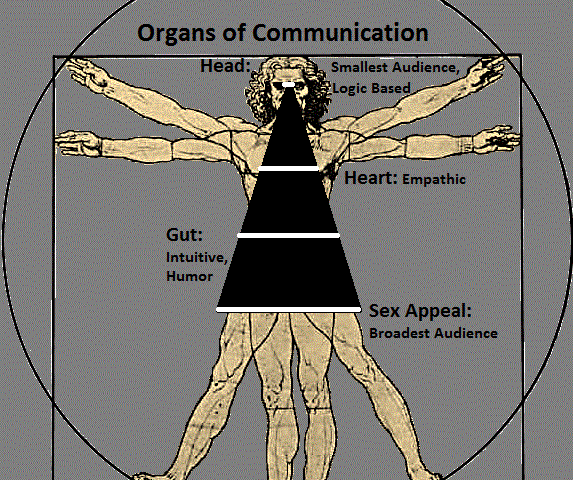In the 1950s and 1960s, heroes such as Dr. Manhattan, Superman, and the Hulk captured the imaginations of the public with the subtle use of science to animate their backgrounds and spark the curiosity of the young and young at heart. Topics such as atomic physics and quantum mechanics were applied in new and exciting ways that could allow Dr. Manhattan to grow to ten times the size of a house or teleport throughout the universe. It was this sentiment in the general public that gave many an interest into the sciences and inspired many scientists. However, since then a paradigm shift has occurred. The general public seems uninterested and not quite as enthralled by the quirks of the nature of the world they live in. This shift away from an interest in the scientific world may be due purely to a shift in public interest, or it could correspond with the way in which science is being communicated.
But in particular, this shift in interest is because the public responds differently depending on the kind of argument involved. Emotional arguments are the most moving for large audiences because of their accessibility, while purely logical arguments are only effective for a few and generally uninteresting because they are all substance and no style. These types of arguments can be broken down into categories best illustrated by four “organs”. Scientists need to learn how to rely on a mixture of these organs, and not just upon logical arguments to reach the audience.
The responsibility of communicating scientific concepts relies on those that understand the content to communicate with those that do not. Public speaking and relating science to the public is not only difficult for many scientists, but is also often viewed as unimportant. This opinion needs to be adjusted, and one way to do so could be through changing the way we think about certain degree programs. Let’s pick on us, the engineers. Who applied to Mines because the application did not require an essay? Who was glad that there were only a few required liberal arts classes to take? The Mines curriculum does attempt to integrate communication into our lives with EPICS presentations and reports and the like. However, beyond that, students do not pursue learning about communication; more specifically, communication to the general public.
Right now, there is one known course that deals with science communication: LAIS 323. Here, students learn how to undo the negative side effects experienced by years of writing subsystem analyses and lab reports. They gain a new perspective on writing. It is about much more than simply substance—writing that is compelling to a wide audience has the element of style. As the need for scientists to communicate well to the public rises, more opportunities to study pure science communication, perhaps as a graduate degree, should start to emerge. There are already a few programs like these, including a one-year master’s at MIT. If Nature and Human Values considers an understanding of modern day engineering and science ethical issues important, then why not supplement that course with a multitude of optional courses in science communication? What is the use of learning about these sorts of things if we are not being trained to discuss them with the public?
Writers’ Note: This piece was written for an Introduction to Science Communication (LAIS323) final project here at CSM. We would love to get students’ feedback on the importance of communicating science to the public and what can be done at Mines. The online edition of this article has a brief survey in the comments section asking how we did and your opinions of communicating science.


'Why Science Needs Communication' has no comments
Be the first to comment this post!